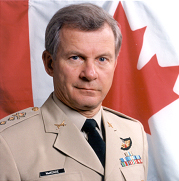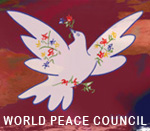Why this strategy won’t fly in Syria
| Activities - Comments |
Lewis MacKenzie Special to The Globe and Mail Published Jun. 25 2013
 So, here we go again. President Barack Obama has decided that the U.S. will supply small-arms to the rebels in Syria fighting the al-Assad regime for control of the country. Record this decision as the equivalent of a bobsled leaving the downhill start at the top of the St. Moritz run in Switzerland. We now have the West, led by the U.S. with potentially Canada sharing the sled, on a slippery slop toward what has become well known over the years as “mission creep.” Anyone remember Iraq, Kosovo or Libya?
So, here we go again. President Barack Obama has decided that the U.S. will supply small-arms to the rebels in Syria fighting the al-Assad regime for control of the country. Record this decision as the equivalent of a bobsled leaving the downhill start at the top of the St. Moritz run in Switzerland. We now have the West, led by the U.S. with potentially Canada sharing the sled, on a slippery slop toward what has become well known over the years as “mission creep.” Anyone remember Iraq, Kosovo or Libya?
If recent history is a guide, the next development as the slope gets steeper will be a call for a no-fly zone over Syria. No-fly zones were originally imposed by the allies following the first Persian Gulf war in 1991. Primarily U.S. and British fighter aircraft patrolled the skies over Iraq to ensure no Iraqi aircraft could threaten groups like the minority Kurdish population in the north of the country. In the memorable words of Senator John McCain, the technique, in its simplest description, tells pilots: “Don’t fly or you’re going to die.” As the 12-year operation of patrolling the skies over Iraq got under way, an additional caveat was inserted into the no-fly protocol. Iraqi ground-based air defence units could continue to be deployed; however, if they turned their radars on and “painted” Allied aircraft enforcing the no-fly zone they would be destroyed on the spot. The no-fly zone operation was successful and achieved its objective of grounding all Iraqi military aircraft.
In 1999, with NATO celebrating its 50th anniversary and no enemy in sight to justify its existence, it sought a new role and solicited a UN resolution to establish a no-fly zone over Serbia/Kosovo – the scene of a civil conflict in the latter, with involvement of the former. When it proved impossible for the UN Security Council to approve such a resolution, NATO, in a highly questionable and arguably illegal move, commenced bombing a sovereign nation, the former Yugoslavia (Serbia/Kosovo).
Justification, it was argued, was provided by a dated, no-longer-applicable UN resolution that provided for a no-fly zone to protect European Union monitors in Kosovo. The fact that the EU monitors were no longer deployed in Kosovo was conveniently ignored. What followed was an all-out bombing campaign against the infrastructure of the former Yugoslavia, all under the guise of enforcing a “no-fly zone.” The term was beginning to get a bad reputation.
In March of 2011, the UN Security Council agonized over what to do about Moammar Gadhafi’s heavy-handed treatment of parts of his population as he sought to put down a rebellion in the eastern coastal regions of his country. After debating what the response should be, the Security Council came up with a result that will haunt its deliberations for the foreseeable future, including how to deal with the current crisis in Syria.
UN Resolution 1973 proposed a no-fly zone over Libya, and following extensive discussions among the Permanent Five (the U.S., Britain, Russia, France and China), both Russia and China went along, having been convinced that the no-fly zone would be the version espoused by the aforementioned Mr. McCain.
From Day 1 of UN Resolution 1973’s approval, NATO commenced all-out attacks on Libya’s aircraft on the ground, airfields, command-and control centres, supply depots, military units and so on. Russia and China had been well and truly duped and it is highly doubtful they will ever allow that to happen again, given the abused interpretation of what constitutes a no-fly zone.
Does Russia’s recent accelerated delivery of S-300 long-range surface-to-air missiles to Syria have anything to do with being embarrassed by NATO’s aggressive application of the UN-approved no-fly zone in Libya and not wanting to see a repeat performance? Probably. Would it preclude the establishment of a no-fly zone over parts or all of Syria? Probably not, as a good deal of the enforcement could be imposed from outside Syria’s borders by stand-off weapons, including air-to-air missiles and cruise missiles, both air- and sea-launched.
The complex situation in Syria’s civil war becomes increasingly so by the day, as more and more outsiders get involved on both sides. Canada is wise to limit its support to helping the war’s displaced persons and refugees. Signing up to another no-fly zone “solution” would not be wise.
Retired major-general Lewis MacKenzie was the first commander of United Nations peacekeeping forces in Sarajevo.
| < Prev | Next > |
|---|
| Overstatement from Davos 2017. |
Liberal corporative capitalism, for reasons of lowering traveling costs, proposed not to travel to history alone but packed togather with NATO, EU and unipollar World Order. Workers participation has good chances to step in provisionally, buying time for full scale workers selfmanagment. |









